Join the VIP Teacher Club!
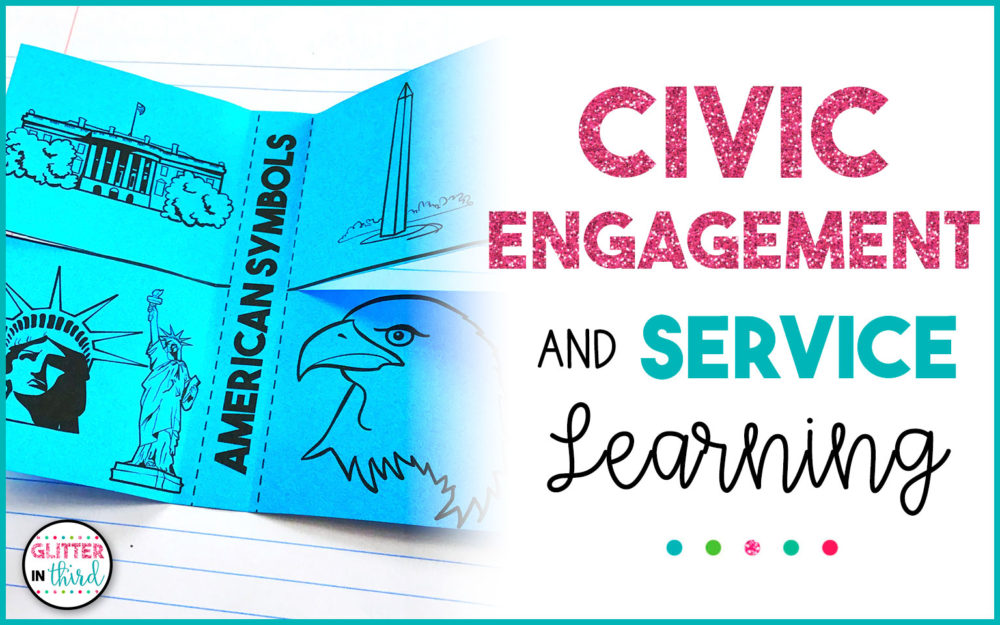
Looking for civics activities in the elementary classroom?
“The best way to find yourself is to lose yourself in the service of others.” – Mahatma Gandhi.
One of my favorite parts of creating civics-type resources is the idea behind them all – service of others and showing good citizenship.
You have a tall task as a teacher of tiny humans, my friend.
You have the future of our world right in front of you.
You have the ability to mold the minds of those who will be running our country one day.
And you have the power to help students be proud of our country.
You may be thinking, “That sounds deep. I just came here to find some Civics resources!”
Don’t worry – I’ve got the resources and how you can use them! 😉
But I want you to know how much of an impact you’re making in your classroom by creating opportunities for your students to learn more about where their passions lie, important aspects of our country, and how they want to make a difference in their community, state, country, and world.
I want to first share with you 2 resource bundles that focus on American symbols, levels of government, rights and responsibilities, the pledge of allegiance, rules and laws, and what it means to show good citizenship.
Following this, I have several ideas on how to expand these lessons, or create some enrichment activities to go along with them! 🙂
In this bundle you’ll find the 6 different topics I previously mentioned as digital resources for Google Classroom!
Each resource includes multiple drag-and-drop and short answer questions.
I’ve also included matching and sorting activities, as well as fill-in-the-blank style questions to build upon the students’ understanding as they go through each slide.
All of the resources go through the process of helping students observe the topic that’s being discussed, identify it, and then actually how to utilize or describe it.
I also have those same 6 topics available in interactive notebook form!
This is the perfect civics activity for the elementary classroom!!
Of course if you’re a paper fan you can print the notebooks, but they are also compatible with EASEL activities if you like to keep your resources digital. 🙂
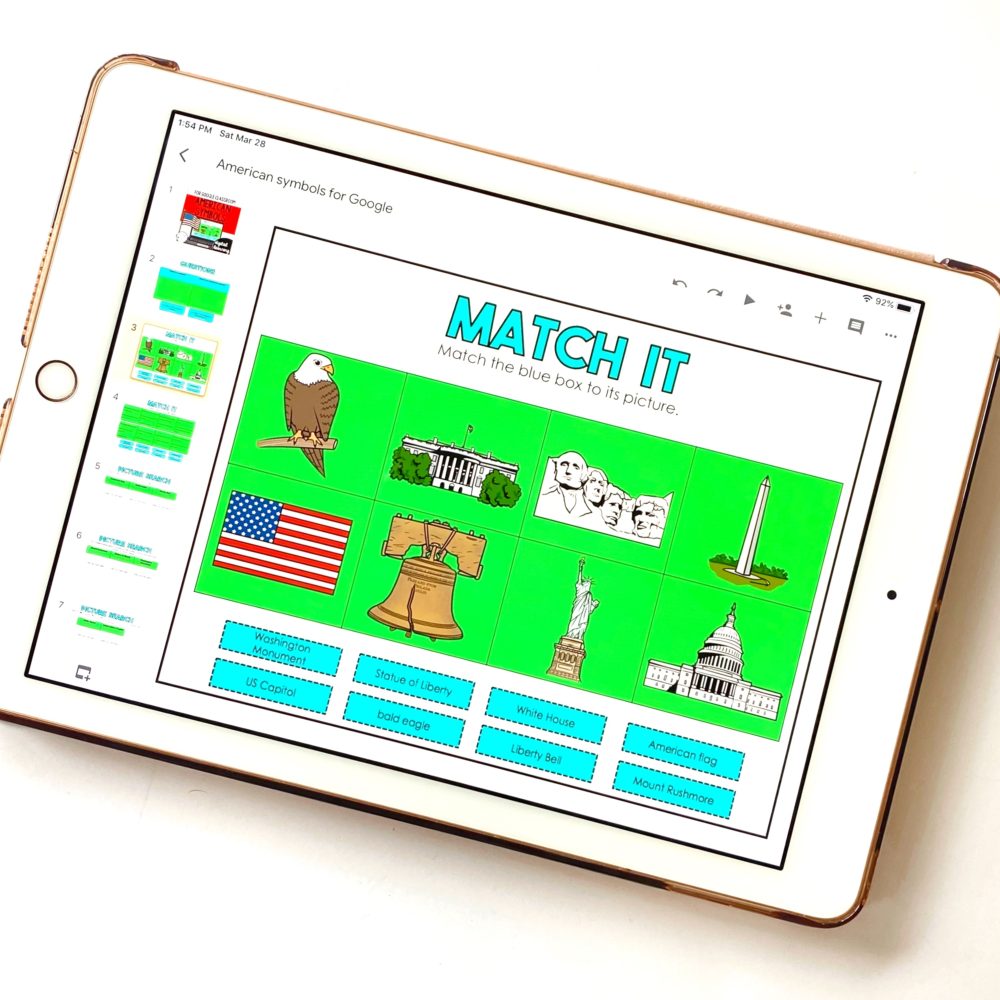
If your students are still relatively new to American symbols, both of these resources will be perfect for them.
They start from the very basics by getting the students to understand what a symbol is, and builds up to discussing several of our most famous American symbols and some facts about each.
There is also a Google Search activity included that will get them looking at actual pictures of the symbols that are talked about!
Kids just love pictures and knowing that what they’re looking at is the “real deal.” 🙂
If you want to take these activities a step further, you could allow your students to choose a symbol they’d love to learn more about and have them structure their research around certain questions you’ve provided.
For example, if a student is curious about Mount Rushmore, some questions they could research would be – When was it built? How long did it take? How many workers were involved? What was the motive behind building it?
You can adjust the research questions based upon the symbol.
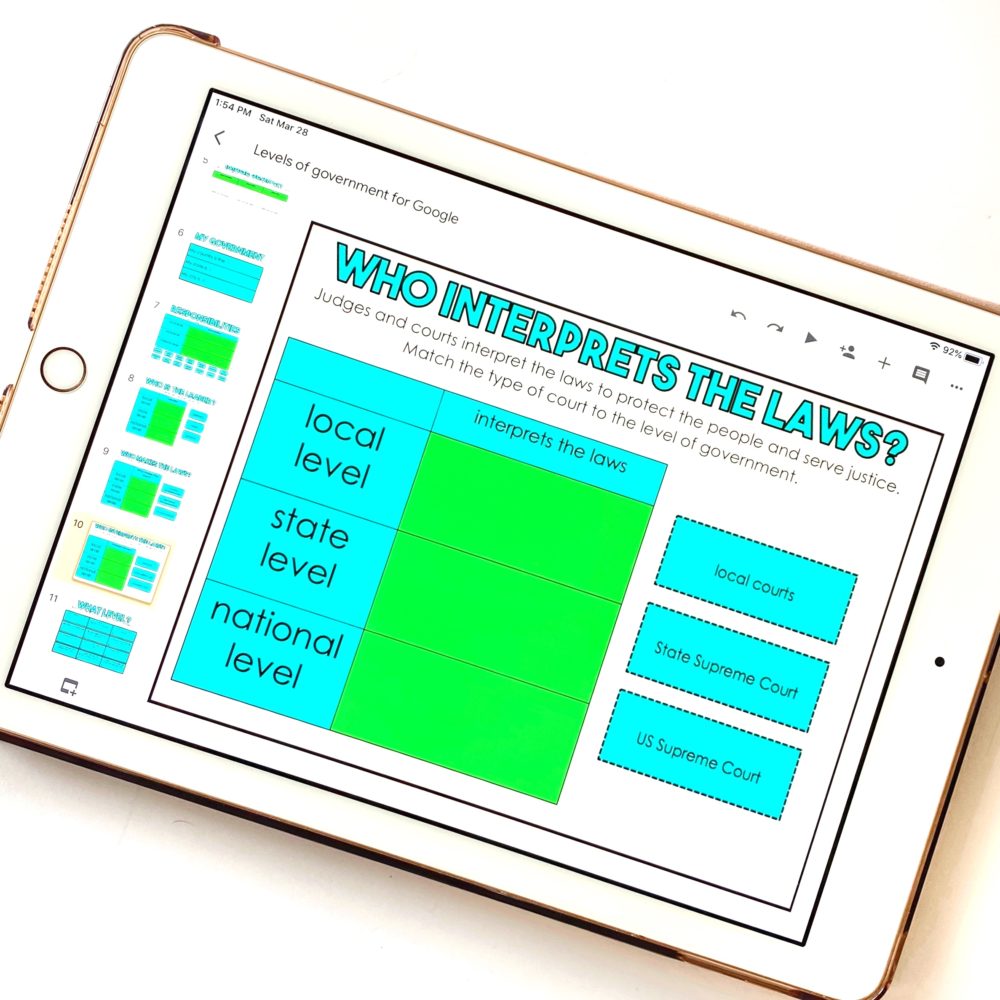
This resource really touches base on all levels of understanding governments, their purpose, and making real-life connections to the different areas involved.
For example, I’ve included questions that specifically ask why governments are important, as well as matching examples of responsibilities to the local, state, and national level.
To address learning at the local level, ask your administration if your class could attend a board meeting.
Your students can learn about parliamentary procedure and the idea behind checks and balances!
Another example would be to have your students create a law that they feel should be implemented either in the state or country.
They could present their laws to the rest of the class and give a speech as to why the law should be passed.
We all know good public speaking skills go a long way in politics. 🙂
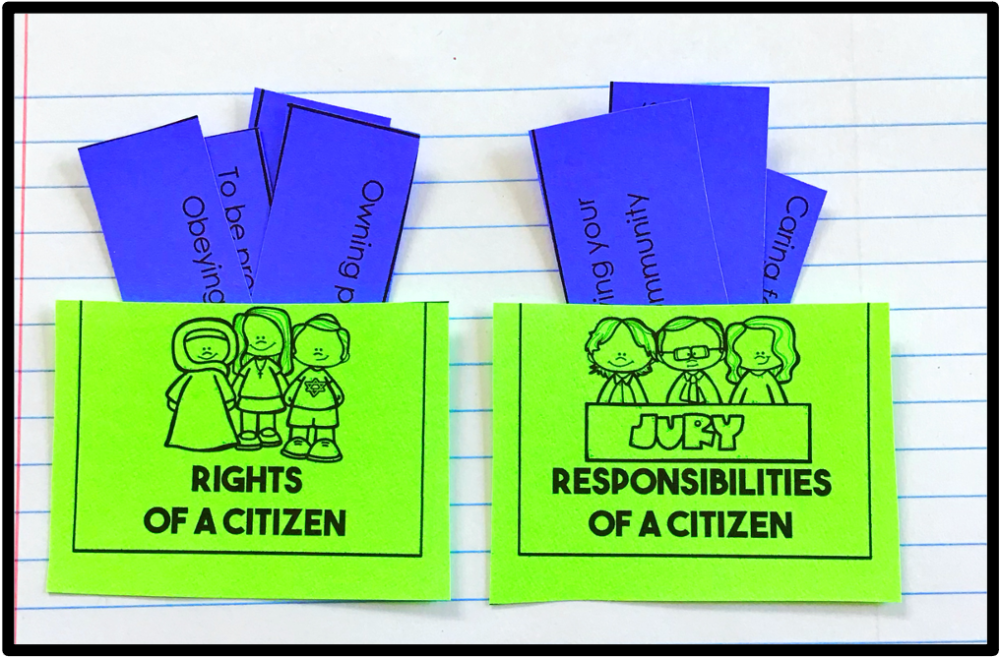
This resource focuses on the rights and responsibilities of a friend, student, and citizen.
It helps teach students the difference between rights and responsibilities and gives multiple examples of each.
It also talks about our specific rights as American citizens such as freedom of speech, assembly, religion, and press.
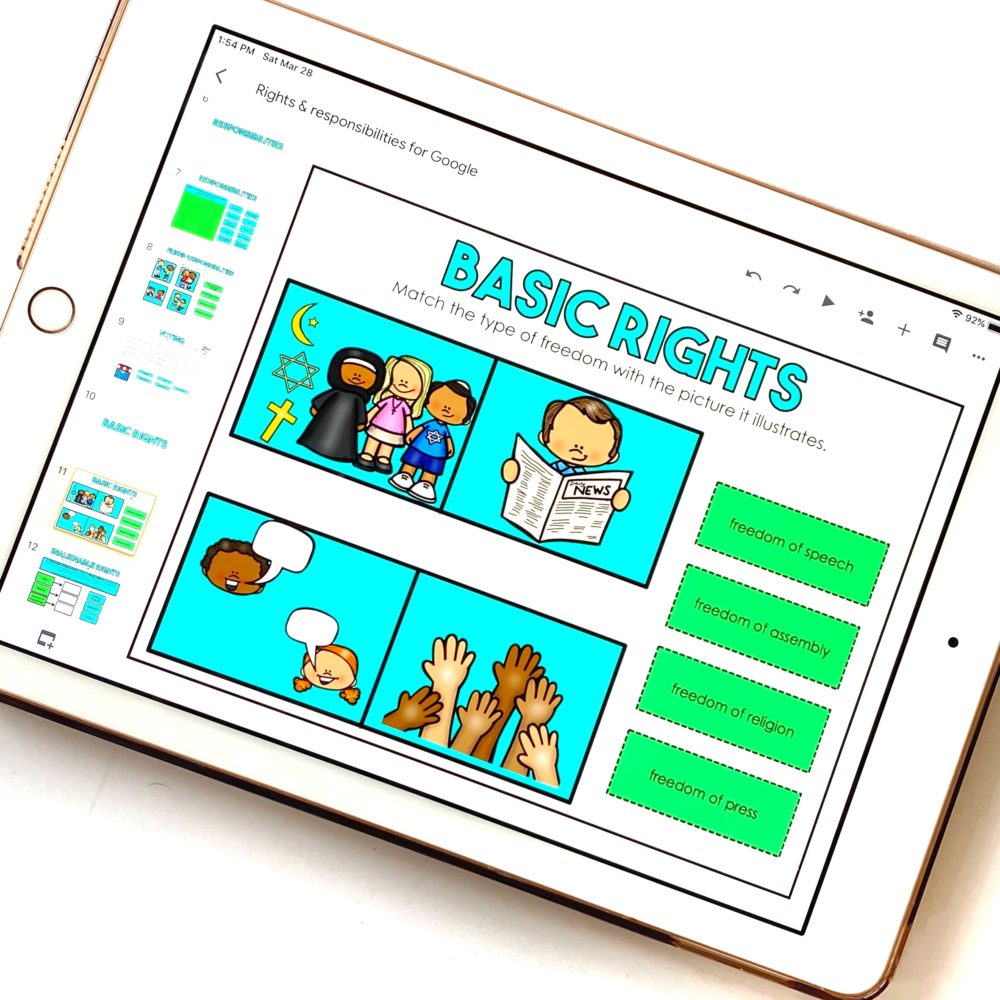
I’ve had success in the past with my students creating their own school Bill of Rights by having them decide what “rights” they have as students at school and what they feel is appropriate to be responsible for.
For example, everyone has the right to equal education, but the responsibility to get their work completed on time.
It’s a great way to build community and inclusion!
You could also discuss the Constitution and dissect the real Bill of Rights to understand what they really mean for us as citizens.
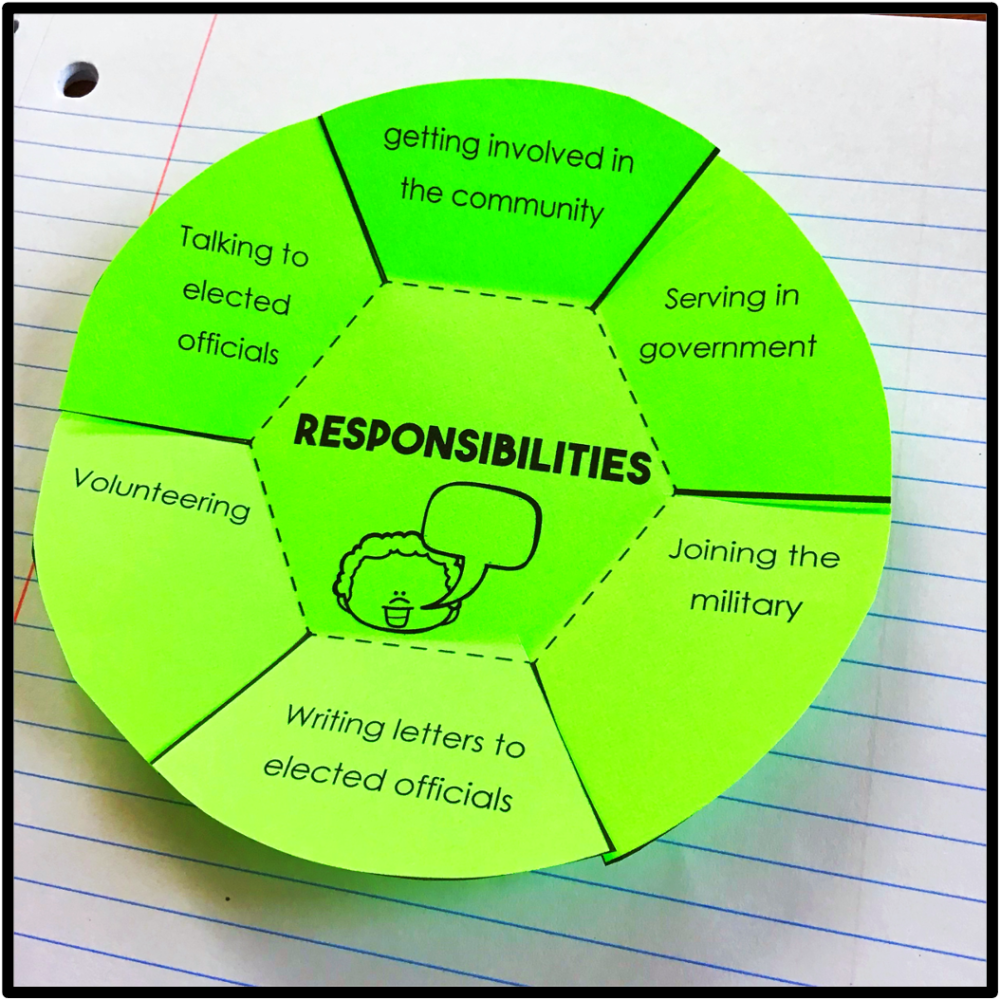
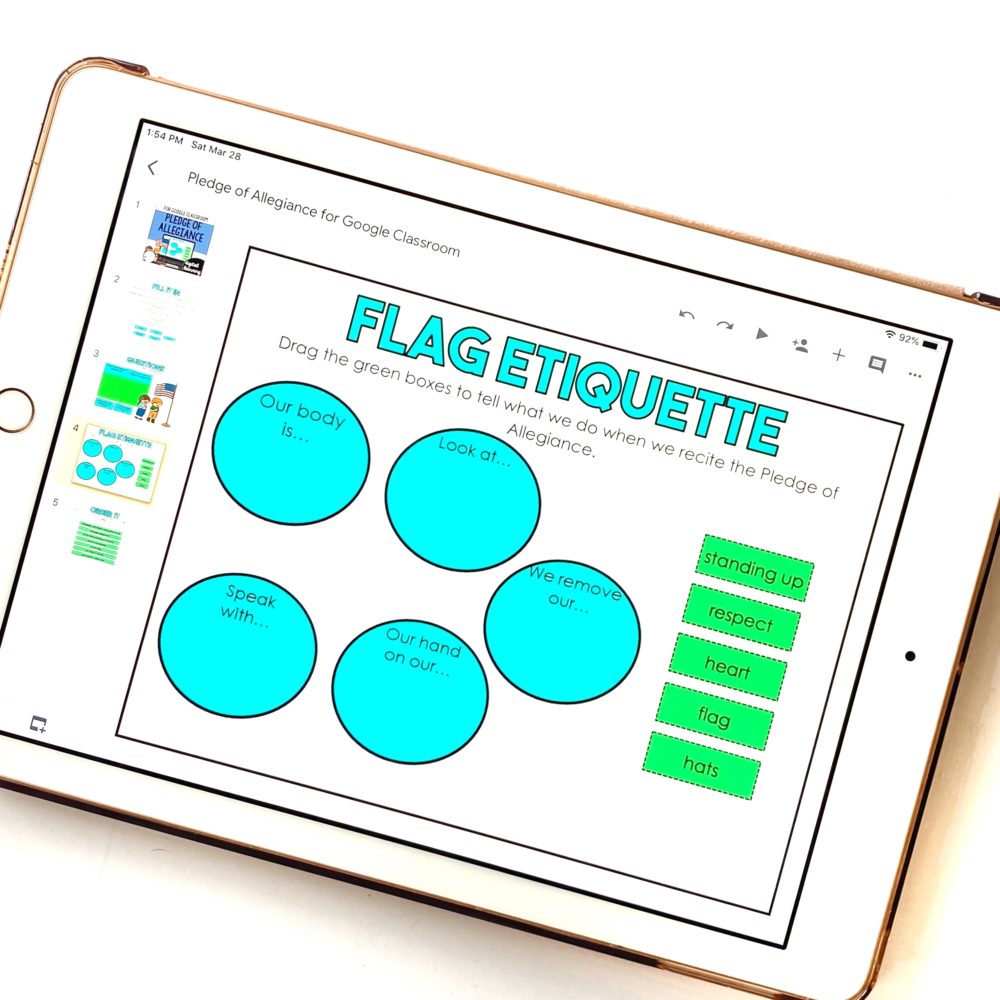
I love this resource because of the significance it puts on flag etiquette!
It does focus on individual words and phrases in the Pledge of Allegiance to help your students better understand what it is they are actually stating.
You could enhance this activity by focusing more on the research of the American flag.
Create some sample questions for them to guide their research – How many stripes are on the flag and what do they represent? Who made the first American flag? While folding the flag, how many folds should there be if it’s done correctly?
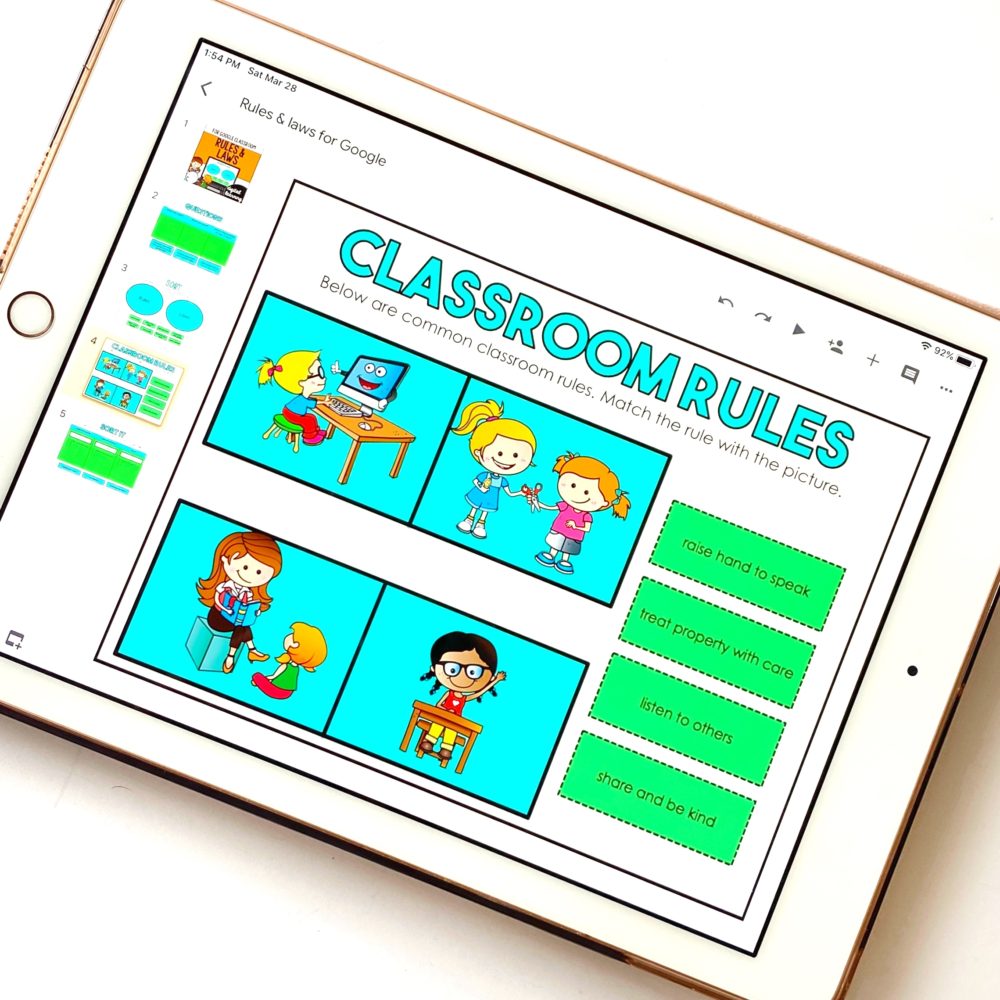
By the end of this activity, your students will understand the difference between rules and laws and where we have each.
For example, rules are at school and at home.
Laws are enforced in our community, state, and country.
It provides several examples of basic rules and laws that are enforced at school, home, and in the local area.
This activity can definitely tie into the levels of government and you could discuss the process of getting a law approved.
I would also suggest holding a debate in your classroom!
Choose any rule or law (it could even be one that’s made up to make things simpler) and have a group of students argue for or against it.
I love holding a debate at any age because it allows students to look at both sides and helps them learn to make decisions for themselves.
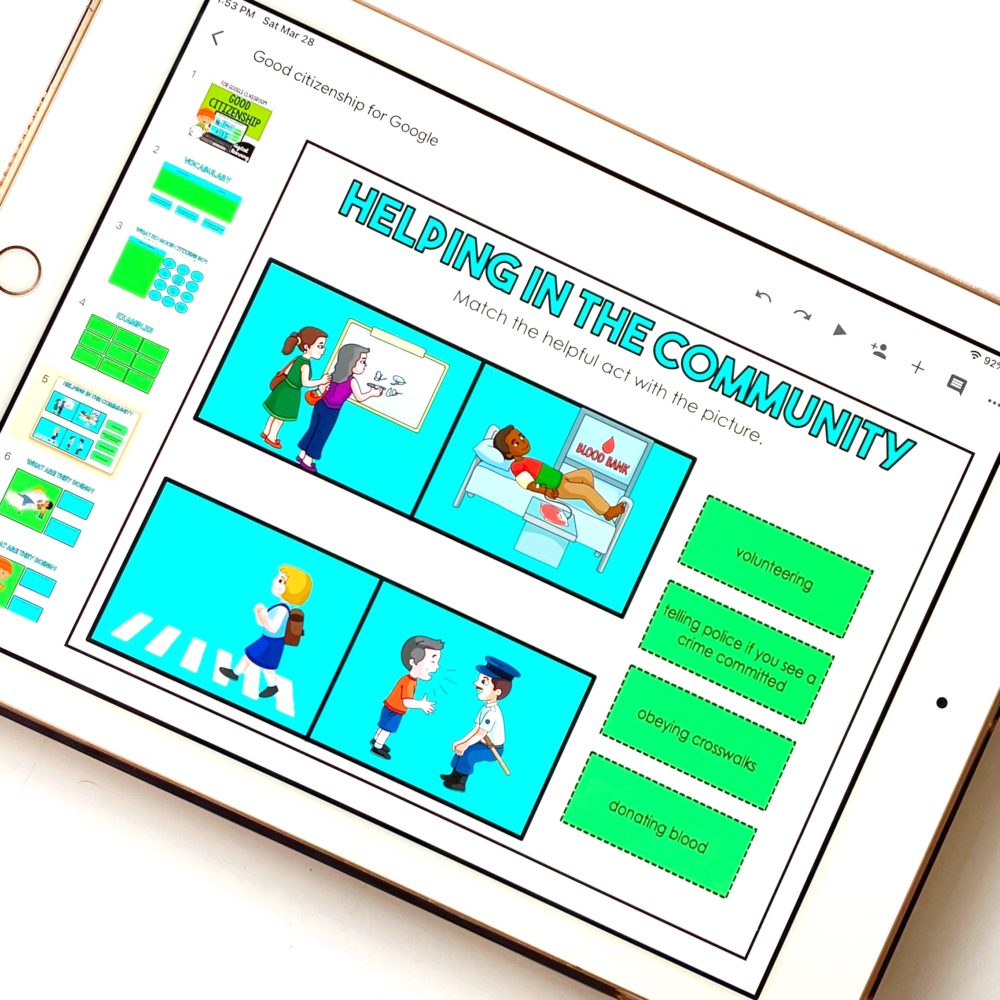
Lastly, and quite possibly my favorite resource in both of these bundles – Good Citizenship!
These activities are loaded with examples of what it means to show good citizenship.
Take any example and make it come to life as a service-learning project!
Take your class to volunteer somewhere for an afternoon or schedule a morning to clean up a local park or the school playground.
I would also suggest asking your students what they’re most passionate about in your local area.
What would make this the best place for everyone to live?
What would add value to our community?
You’ll be surprised what your students come up with to answer these questions. 🙂
I also have a blog post that focuses on character education in the classroom – check it out here.
I love all the life lessons that can be tied to these resources!
If you’d like to get a preview of the Google Classroom Civics Bundle or the Civics Interactive Notebook Bundle, you can find them here! Happy learning, hope you liked these civics activities for the elementary classroom!
(Are you a Virginia teacher? Make sure to check out my social studies guides for grades 2nd and 3rd!).
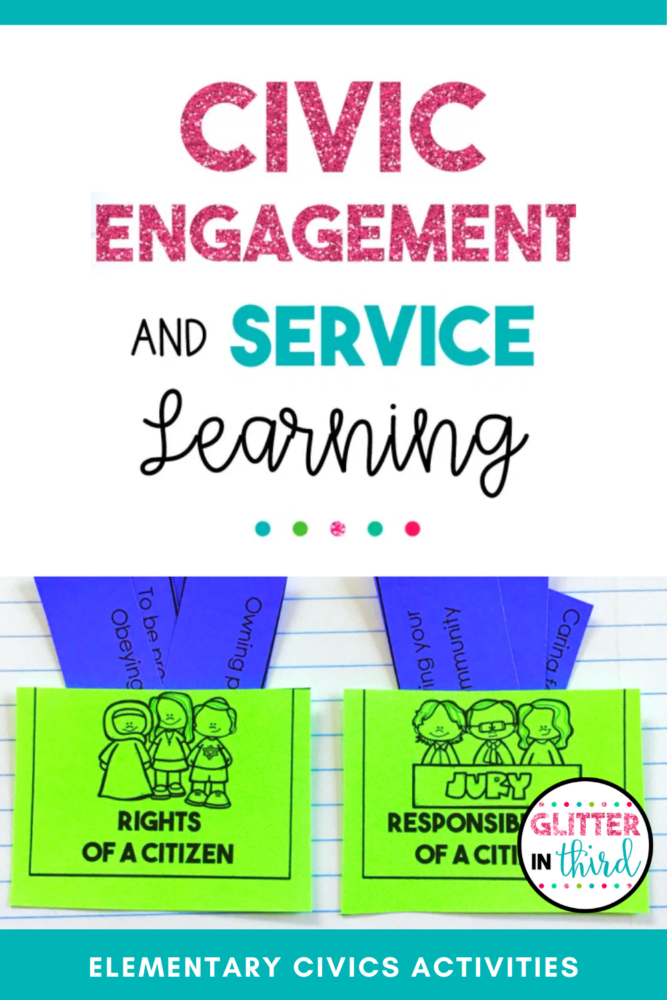

Hey there, I’m Kelly! I I love helping teachers save time with technology and resources so they have more hours in the day to spend with family and friends. Take a look around to find new ideas that you can implement in your classroom today!